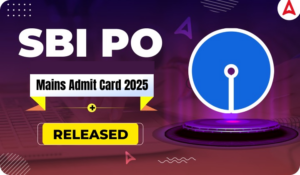The upcoming important exams are NABARD grade A and grade B, in which there is a section of Economic & Social Issues (with focus on Rural India) wherein 40 questions will be there carrying 40 marks. So, for the same, it becomes really important to have an in-depth knowledge of the Indian Economy covering topics such as Inflation, Poverty Alleviation and Employment Generation, Industrial and Labour Policy, Social Structure in India etc. Further its imperative to be aware of the Programmes and Schemes taken up by the government to counter the issues arising. To help you with this, today, we are providing you with all necessary information related to the mentioned field which will help you to fetch some good marks. This is the First part of the Study Note Series which would be covering Poverty Alleviation portion.
Poverty refers to socially perceived deprivation in terms of basic human needs. It has both material and nonmaterial dimensions. The material dimension relates to deprivation in consumption including items such as food, clothing, durables, shelter, health, education and connectivity. Nonmaterial dimension relates to deprivation associated with such phenomena as discrimination based on gender, religion, race or caste.
Note: The conventional approach to measuring poverty focuses on the material dimension.
Measuring Poverty
The first step in measuring poverty is to specify a threshold level of expenditure that separates the poor from non-poor.
The threshold expenditure, which is called the poverty line, is the amount necessary to purchase a basket of goods and services deemed necessary to satisfy basic human needs at socially acceptable levels.
The basket itself may be referred to as the poverty line basket (PLB).
Rangarajan Committee Poverty Line
The Planning Commission appointed the committee in 2012 under the chairmanship of economist C. Rangarajan.
It submitted the report in June 2014.
It recommended separate consumption baskets for rural and urban areas which include food items that ensure recommended calorie, protein & fat intake and non-food items like clothing, education, health, housing, and transport.
It again de-links the rural and urban poverty lines.
The recommended methodology of Rangarajan committee raised the Tendulkar national rural poverty line from Rs. 816 per-capita per month at 2011-12 prices to Rs. 972 and the Tendulkar national urban poverty line from Rs. 1000 per capita per month at 2011-12 prices to Rs. 1407.
The recommended increase was 19% in the rural poverty line and 41% in the urban poverty line.
These revisions lead to the total national poverty estimate in 2011-12 to rise from 21.9 percent under the Tendulkar line to 29.5 percent.
Note: India has relied on a two-pronged strategy to eradicate poverty. In addition to raising incomes of the poor through growth, it has used substantial portions of the enhanced revenues from faster growth to directly help the poor.
A Brief on the POLICIES AND PROGRAMMES TOWARDS POVERTY ALLEVIATION
The government’s approach to poverty reduction was of three dimensions. The first one is the growth-oriented approach. It is based on the expectation that the effects of economic growth — rapid increase in gross domestic product and per capita income — would spread to all sections of society and will trickle down to the poor sections also.
The policy makers started thinking that incomes and employment for the poor could be raised through the creation of incremental assets and by means of work generation. This could be achieved through specific poverty alleviation programmes. This was the second approach & was initiated from the Third Five Year Plan (1961-66).
Expanding self-employment programmes and wage employment programmes are being considered as the major ways of addressing poverty. Examples of self-employment programmes are Rural Employment Generation Programme (REGP), Prime Minister’s Rozgar Yojana (PMRY) and Swarna Jayanti Shahari Rozgar Yojana (SJSRY).
The third approach to addressing poverty is to provide minimum basic amenities to the people. Programmes under this approach are expected to supplement the consumption of the poor, create employment opportunities and bring about improvements in health and education.
Three major programmes that aim at improving the food and nutritional status of the poor are Public Distribution System, Integrated Child Development Scheme, and Midday Meal Scheme. Pradhan Mantri Gram Sadak Yojana, Pradhan Mantri Gramodaya Yojana, Valmiki Ambedkar Awas Yojana are also attempts in the same direction. National Social Assistance Programme is one such programme initiated by the central government.
For suggestions and queries kindly drop a mail at…
contact@bankersadda.com or gopal.anand@adda247.com
You may also like to Read:





 GA Capsule for SBI Clerk Mains 2025, Dow...
GA Capsule for SBI Clerk Mains 2025, Dow...
 The Hindu Review October 2022: Download ...
The Hindu Review October 2022: Download ...
 SBI PO Mains Admit Card 2025 Out, Downlo...
SBI PO Mains Admit Card 2025 Out, Downlo...





